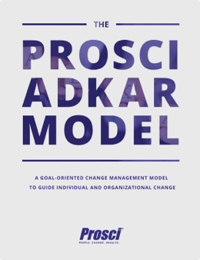A couple of weeks ago I posted the first in what I planned as a short series of pieces looking at how Prosci’s ADKAR model had fared in helping those of us based in the UK navigate the monumental changes necessitated by the Covid-19 pandemic. I got as far as ADKAR’s first A – awareness – and had the content of the others mapped out in my mind, and then on Sunday, 10 May, the Prime Minister addressed the nation and “R”, Covid Alert Systems, Joint Biosecurity Centres and the shape of a conditional plan of five tests began to be messaged.
The previously unequivocal awareness-raising headline that was understood and endorsed by politicians for the whole of the UK of stay home, save lives, protect the NHS was dropped. In its place, a new message of stay alert, protect the NHS, save lives was released, and it appeared to be for England only, with Northern Ireland, Scotland and Wales maintaining previous directions. In the weeks that have followed, we have had partial easing of the lockdown, again at different rates across the four countries of the UK, a high-profile Prime Ministerial adviser achieving near-total saturation of news and social media coverage for appearing to break the previous lockdown directions – directions he is credited with devising - but it being judged that he had not, and some of warmest and sunniest May weather on record, and the best of that weather coinciding with a bank holiday weekend.
Endeavouring not to get sucked into the politics, what does the ADKAR framing have to teach us about how citizens of the UK have experienced the Covid-19 changes that have emerged over that past 20 days? For me, the most striking lesson has been the link between awareness and desire, the first two block in ADKAR. I spend much of my professional life introducing customers to the ADKAR model and helping them deploy it at individual, team and organisation-wide levels to achieve change and transformation success.
This work invariably starts with the awareness and desire components: awareness of what the change is, why does it need to happen, why does it need to happen now, what are the benefits of changing, what are the risks if the change is not made, what is not changing; desire to commit to, and get on board with, that change. I describe awareness as “talking to someone’s head” (understanding and comprehension about the change) and desire as “appealing to their heart” (helping someone understand what’s in it for her/him and influencing that personal decision to get with the change).
Download: ADKAR Model Overview
The way that the ADKAR model is constructed beautifully mirrors our own natural experiences and reactions when we encounter change and time and time again we see that the clearer someone’s understanding of the change, the better placed they are to evaluate their own desire for it: weighing up the personal pros and cons, what do I get out of this change versus what do I have to give up, where will I have to compromise. Between 23 March (the date of the PM’s first Covid-19 address to the nation) and 10 May (his second address) the awareness messages about the changes we were being asked to make as citizens was crystal clear, and judging by Office for National Statistics data and photographs of deserted cities and towns (the Kashmiri goats descending the Great Orme to skip around the empty streets of Llandudno was my particular favourite) the messages were effective. Contrast that with the decisions citizens have made in response to the subsequent messages.
Gradually lifting a lockdown and beginning to return a country, or countries, to some semblance of “normal” was always going to be a challenge; the partial lifting messages needed to be more nuanced and more multi-dimensional that the incisive “stay home” direction of March. Another key element of what ADKAR has to tell us has come into play in the past 10 days: the Prosci research indicates that when I am raising my awareness of a change, I look to hear the messages from a senior leader accountable for the outcomes of that change, ergo we see the PM addressing the nation.
One of the principal traits we require of the senior leader is that they authentically believe in the change and are actively and visibly “walking the talk” of the change. Again, parking any political points, I have been pondering how the PM’s backing for his senior adviser signalled – palpably signalled to most observers – an apparent retreat from the universal stay home instruction: actions speaking louder than words. And the extent to which that signalling – intended or otherwise – played directly to citizens’ ongoing desire to continue to make the sacrifices lockdown demanded. I’m sure telephoto lenses may have been deployed to emphasise the point, but the contrast between the empty beach at Barry (South Wales, where there had been no easing of restrictions) and Southend (Southern England where partial easing had been announced) on 20 May seemed to me a powerful depiction of changes in levels of desire. I sincerely hope that it does not take a spike in R (rate of infection) and concomitant mortality figures for any reset of desire levels.
The pandemic has also usefully demonstrated the logical but not linear way in which we onboard changes – embracing and adopting change is not a straight-line experience. ADKAR is a logical, sequential model and as a change management professional I work to help individuals and groups impacted by change to progress through it, one ADKAR block after another, starting with awareness, through desire, knowledge and ability and then applying reinforcement efforts to ensure a change sticks. It is key that barriers are cleared in any block before we move to the next. So although some of us might now be confused about, and have barriers to, the latest case for the change (current awareness) and see this impacting commitment to stick with it (continuing desire to comply with social distancing, for example, or send children of a certain age back to school), I would contend that with the exception of children and decision-incapacitated adults, we all have the knowledge (the skills we require) and the ability (proficient, demonstrable competence) to adhere to latest instruction.
The extent to which the PM’s senior adviser, and other politicians and public figures, have stuck to the rules, and the PM’s and Cabinet colleagues’ public responses to this, have likely deeply impacted our commitment to reinforce the change (to stick with social distancing so R remains below 1, for instance). I am watching avidly to see the interplay between message and action – awareness to desire – as we go through the next month and, like you, am on tenterhooks about increases in infection rates and the consequences of citizens with health vulnerabilities and who have been shielding to this point, beginning to get out and about.
I conclude that ADKAR has had much to offer us over the past 10 weeks. The model’s application to pinpoint barriers and enable those of us engaged in change – from the PM to the fledgling project manager – to recommend and execute actions to lift barriers will serve us well as we negotiate the next steps of this pandemic.
Want to Learn more?
Learn more about Prosci's ADKAR model by attending an upcoming Virtual Prosci Practitioner Certification Programme. Find out more or download the brochure.
CMC Global also offers private, single-company on-site training and advisory support worldwide. For more information on our virtual and remote options, get in touch!


